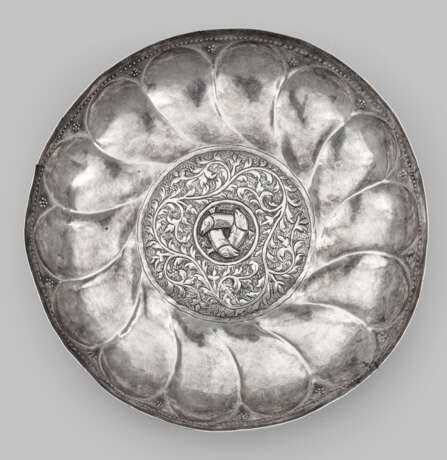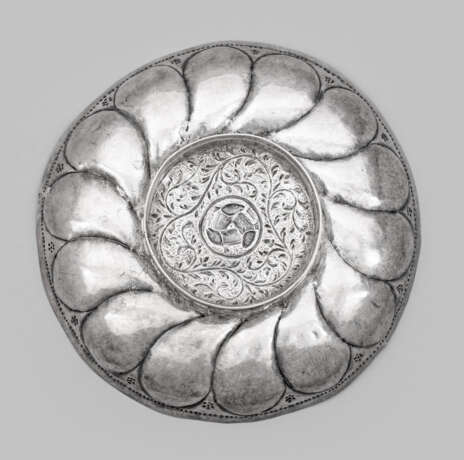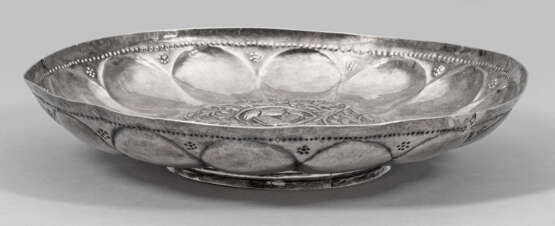ID 1185799
Lot 310 | Hochbedeutende spätgotische Schale
Estimate value
€ 28 000 – 56 000
Beigefügt: Gutachten Prof. Dr. Richter vom 05.03.2024.
Bereits seit der Antike gab es die römische "Patera" sowie die griechische "Phiale". Dabei handelt es sich um ebensolche flache, runde Schalen, zentral verziert mit einem aufgewölbtem Nabel (griech. "omphalos"). Sie dienten ursprünglich als Opferschalen oder zur Reinigung, wurden jedoch später auch als Trinkschalen verwendet. Die drei ineinander verschlungenen Fische in der Schalenmitte verweisen auf ein frühchristliches Symbol der Dreifaltigkeit, als Einheit von Gott Vater, dem Sohn Jesus Christus und dem Heiligen Geist. Der sog. Fischblasendekor kam vermutlich aus dem asiatischen oder persischen Raum über die Handelswege nach Europa. Insbesondere in Venedig der florierenden Handelsstadt, trafen die unterschiedlichen kulturellen Einflüsse zusammen und machten die Hafenstadt berühmt für die Herstellung außergewöhnlicher und bedeutender Kunstobjekte. Silberschalen dieser Art sind typisch für die Zeit der Spätgotik. Im 16. Jh. wurden sie in ähnlicher Weise aber zumeist aus Kupfer oder Messing wie z. B. die sog. Beckenschlägerschüsseln aus Nürnberg gefertigt.
Eine gefußte Schale mit ebensolchem, erhabenem Nabel mit drei ineinander verschlungenen Fischen, dem typischen Fischblasendekor sowie den punzierten Blütenrosetten, Venedig 1480 - 1490 zugeschrieben, befindet sich, neben einer weiteren Schale mit abweichendem Dekor (LOAN:GILBERT.544-2008), im Victorian & Albert Museum in London (Inv.-Nr. 274-1881).
A very important probably Italian, Venice Gothic silver footed bowl. Unmarked. Accompanied by an expertise from Prof. Dr. Richter, March 2024.
Wohl Italien. Venedig. Um 1500.
| Address of auction |
Kunstauktionshaus Schloss Ahlden GmbH Große Str. 1 29691 Ahlden(Aller) Germany | ||||||||||||||
|---|---|---|---|---|---|---|---|---|---|---|---|---|---|---|---|
| Preview | |||||||||||||||
| Phone | +49 5164 80100 | ||||||||||||||
| Buyer Premium | 25.0 | ||||||||||||||
| Conditions of purchase | Conditions of purchase | ||||||||||||||
| Business hours | Business hours
|





